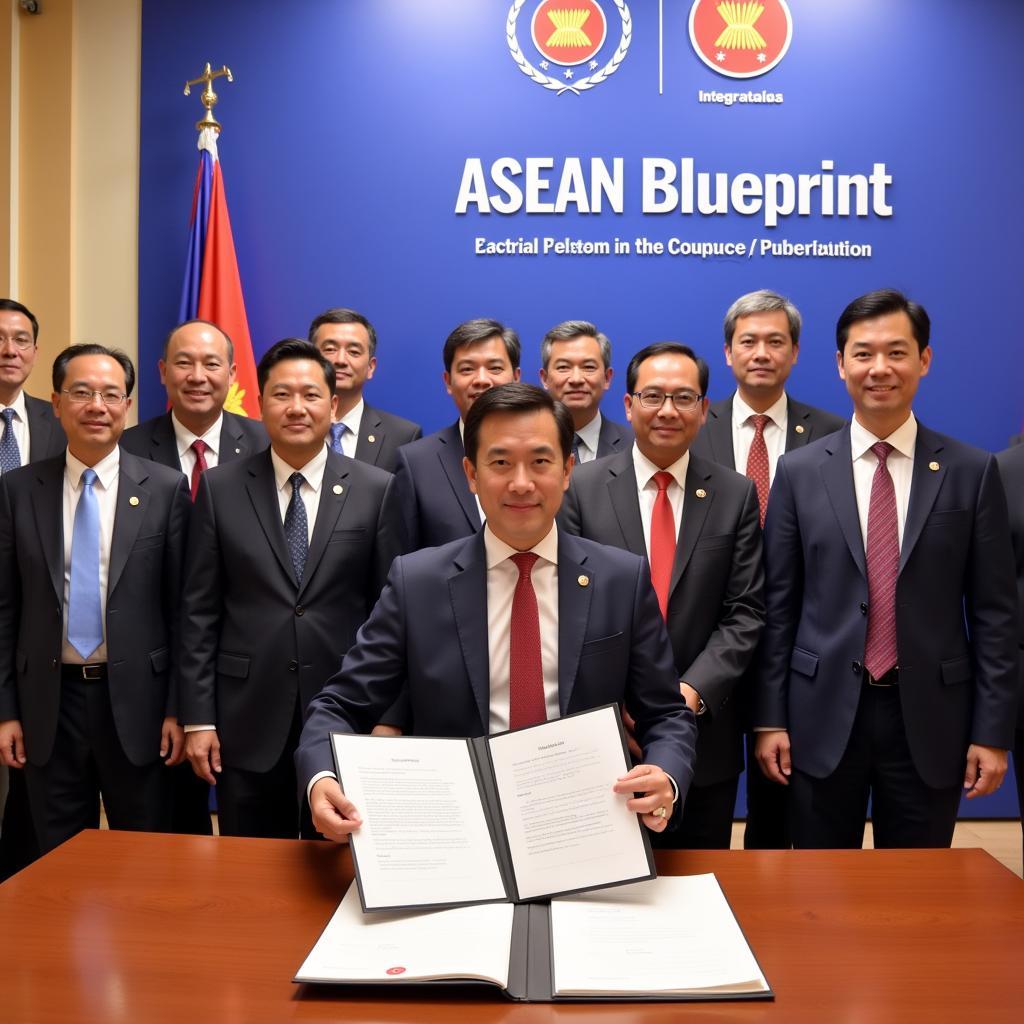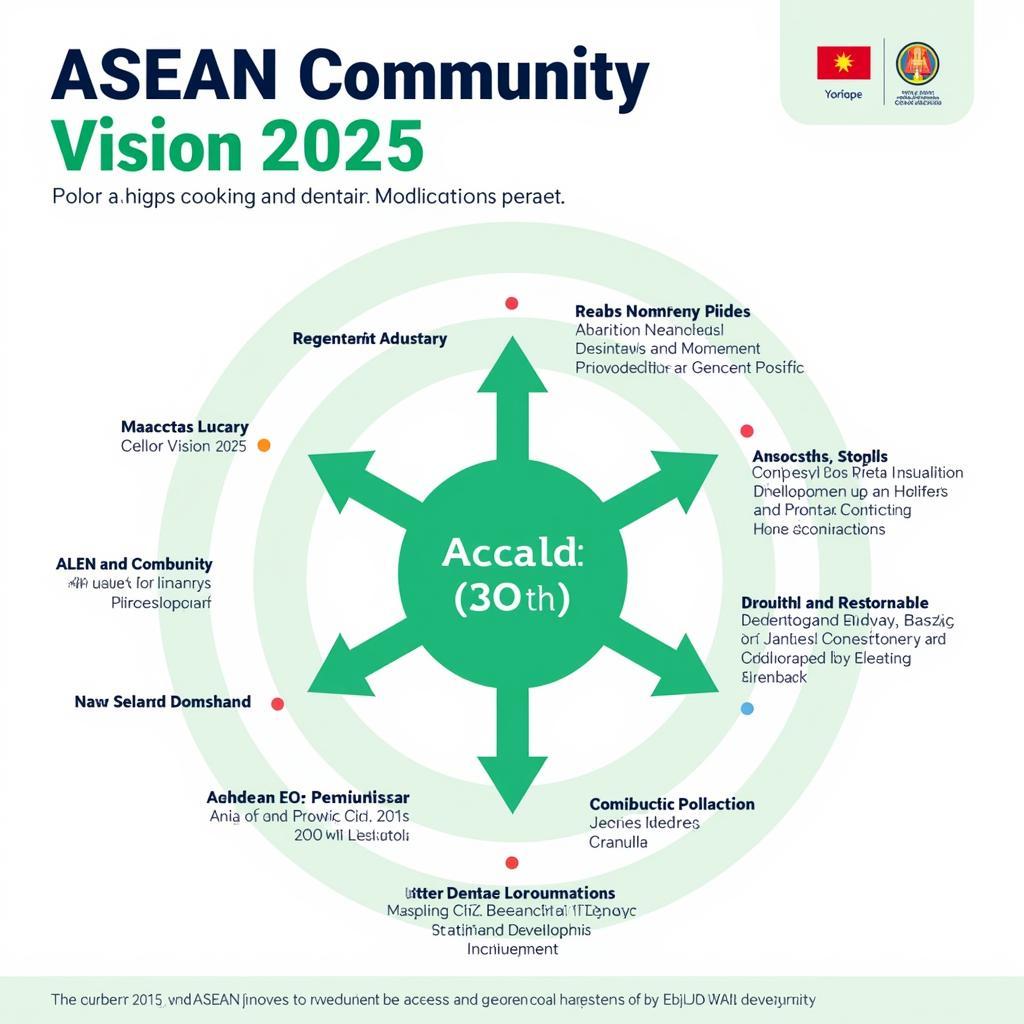The Asean Blueprint Adopted in 2007 marked a pivotal moment in the journey towards regional integration. This ambitious roadmap laid the foundation for the ASEAN Community, envisioning a politically cohesive, economically integrated, and socially responsible region by 2015. ase 2009
Understanding the Significance of the ASEAN Blueprint
The ASEAN Blueprint wasn’t merely a document; it was a declaration of intent, a testament to the shared vision of a unified and prosperous Southeast Asia. It detailed specific measures and timelines for achieving the three pillars of the ASEAN Community: the Political-Security Community, the Economic Community, and the Socio-Cultural Community. This comprehensive approach aimed to create a region where people, goods, services, and capital could move freely, fostering greater cooperation and understanding among member states.
 ASEAN Leaders at the Blueprint Adoption Ceremony
ASEAN Leaders at the Blueprint Adoption Ceremony
The Three Pillars of the ASEAN Community
The ASEAN Blueprint addressed key areas within each pillar. The Political-Security Community focused on strengthening regional peace and security through enhanced cooperation in areas such as conflict prevention and resolution. The Economic Community aimed to create a single market and production base, promoting free flow of goods, services, investment, and skilled labor. The Socio-Cultural Community sought to foster a sense of shared identity and purpose among ASEAN citizens, promoting cultural exchange, environmental protection, and social development.
Challenges and Achievements in Implementing the ASEAN Blueprint
While the ASEAN Blueprint provided a clear direction, its implementation was not without its challenges. Differing levels of development among member states, varying political systems, and diverse cultural backgrounds presented significant hurdles. However, ASEAN demonstrated remarkable resilience and commitment, making significant strides towards achieving the goals outlined in the Blueprint.
Measuring Progress and Adapting to Change
Recognizing the need for continuous improvement, ASEAN regularly monitors and evaluates progress towards achieving its goals. The Blueprint’s implementation has led to the creation of various mechanisms for cooperation and coordination, fostering closer ties among member states. Furthermore, ASEAN has demonstrated its adaptability by revising and updating the Blueprint to address evolving challenges and opportunities.
The ASEAN Blueprint: A Legacy of Cooperation and Integration
The ASEAN Blueprint has left an indelible mark on the region. It has fostered a spirit of cooperation and collaboration, transforming Southeast Asia into a more integrated and prosperous region. While challenges remain, the Blueprint serves as a testament to ASEAN’s enduring commitment to its shared vision of a peaceful, prosperous, and people-centered community.
Looking Ahead: The Future of ASEAN Integration
Building on the foundation laid by the ASEAN Blueprint, the region continues to strive towards greater integration. The ASEAN Community Vision 2025, building upon the successes of the Blueprint, charts the course for the next phase of ASEAN’s journey. This vision emphasizes dynamic, inclusive, and sustainable development, further solidifying ASEAN’s position as a key player on the global stage.
 Key Pillars of ASEAN Community Vision 2025
Key Pillars of ASEAN Community Vision 2025
Conclusion
The ASEAN Blueprint adopted in 2007 remains a cornerstone of regional integration. Its legacy of cooperation and collaboration continues to shape the future of ASEAN, paving the way for a more integrated, prosperous, and resilient Southeast Asia. asean 2025 forging ahead together declaration
FAQ
- What is the ASEAN Blueprint?
- What are the three pillars of the ASEAN Community?
- When was the ASEAN Blueprint adopted?
- What are some of the key achievements of the ASEAN Blueprint?
- What are the future goals of ASEAN integration?
- What challenges did ASEAN face in implementing the Blueprint?
- How does the ASEAN Blueprint relate to the ASEAN Community Vision 2025?
When you need support, please contact Phone Number: 0369020373, Email: [email protected] Or visit: Ngoc Lien Village, Hiep Hoa, Bac Giang, Vietnam. We have a 24/7 customer support team.
